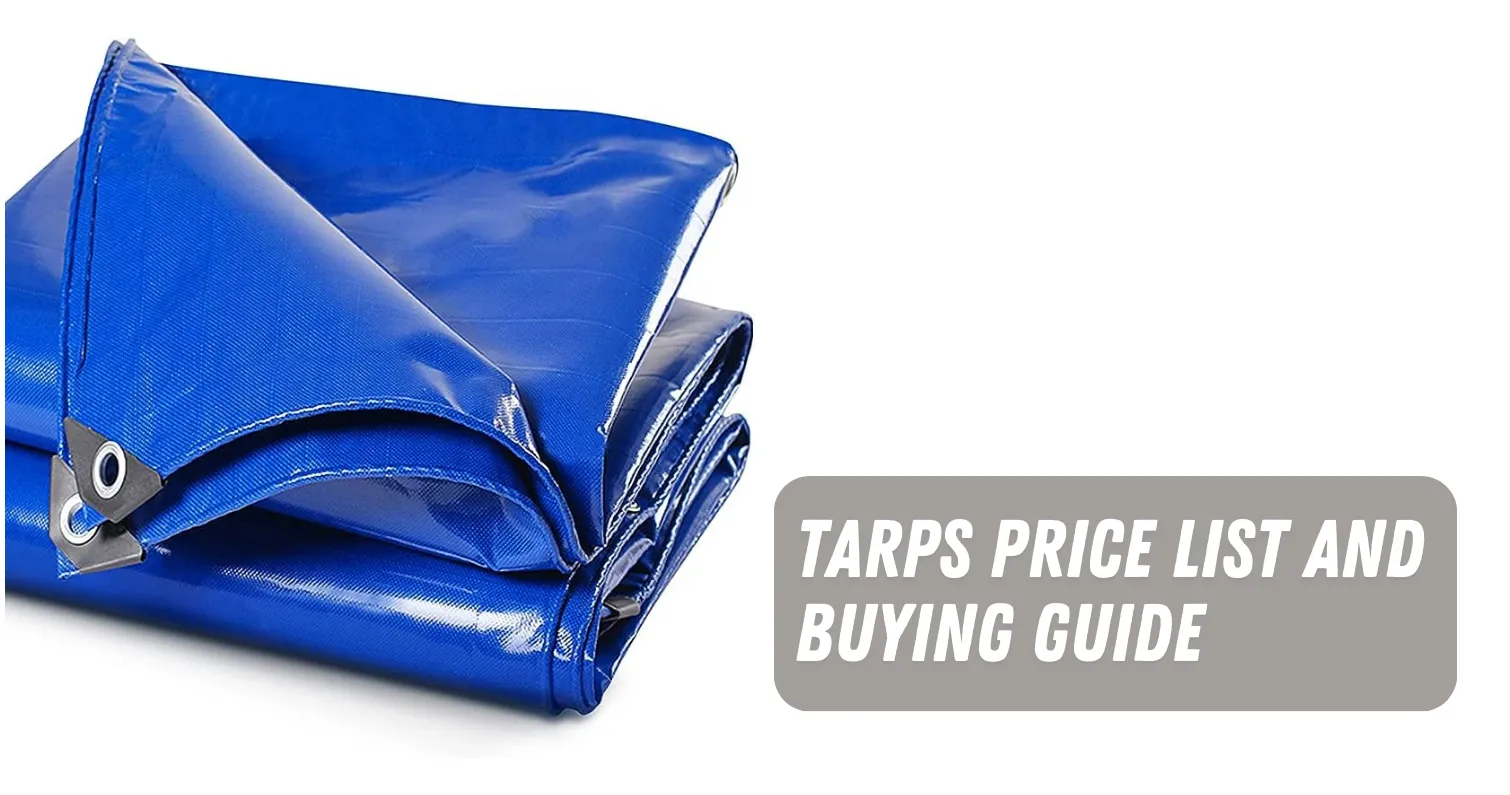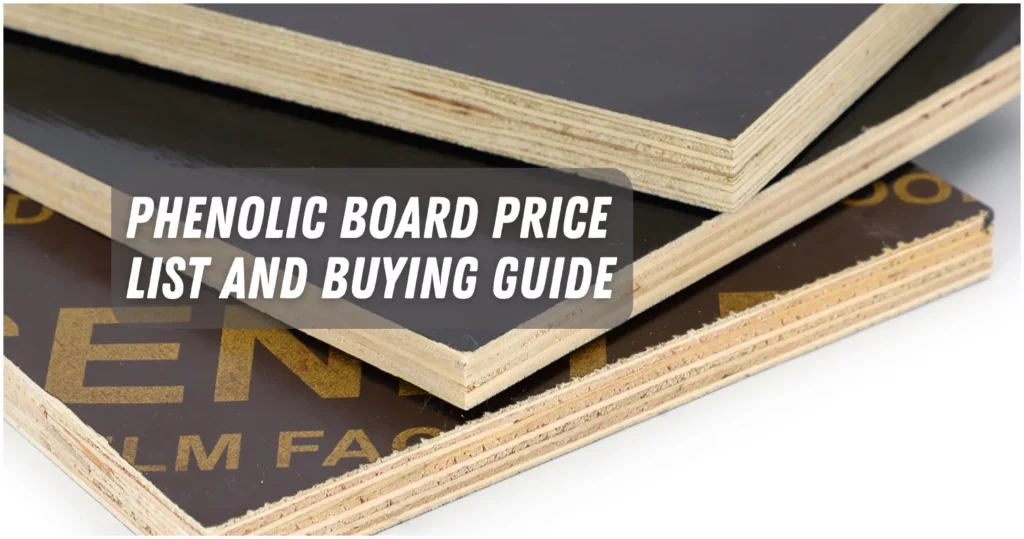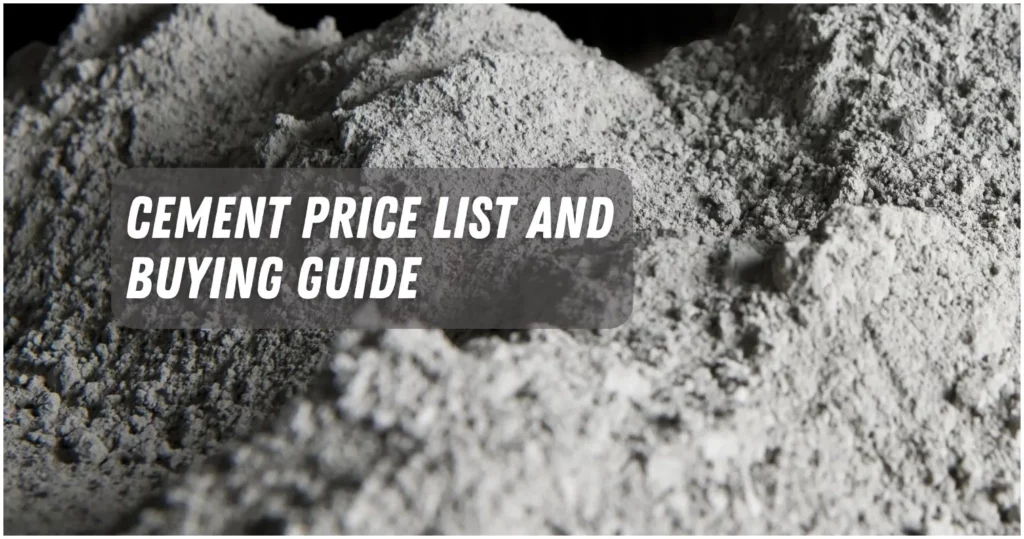Tarps, or tarpaulins, are large sheets of flexible, waterproof, and durable material at a low price.
They’re usually made of canvas, polyethylene, vinyl, or polyester and costs ₱150 to ₱1,800 per sheet.
In this article, we’ll talk about tarp prices in the Philippines and other things you should know before buying them.
What is Tarps

Tarps, which are also called tarpaulins, are large sheets that can be used to cover, shelter, or secure things.
They are square and have grommets or eyelets that make them easy to tie.
Most of the time, they are made of materials that are flexible, waterproof, and strong, such as canvas, polyethylene, vinyl, or polyester.
The two main kinds are light-duty and heavy-duty.
Light-duty tarps are thinner and lighter, making them good for temporary uses like covering furniture or gardening tools.
They are cheap and easy to work with, but they don’t last long or protect against UV rays, water, mold, or mildew.
Heavy-duty tarps are thicker and heavier, and they are made for long-term uses like covering trucks or building supplies.
They cost more and are harder to work with, but they are very durable and protect against bad weather, UV rays, water, mold, and mildew.
Tarps Uses
Tarps offer a multitude of uses across various scenarios and industries, including:
- Covering vehicles, boats, motorcycles, bicycles, and other equipment against weather damage and theft.
- Building tents, canopies, and awnings for camping, picnics, parties, and events.
- Covering floors, walls, roofs, windows, and doors during painting, renovation, or repair work.
- Gardening or composting with rainwater, snow, or leaves.
- shading, insulating, or concealing plants, animals, or people.
- Advertising or decorating with banners, signs, curtains, or backdrops.
- Securely transporting goods, materials, or waste.
Different Tarps Types

Depending on the material, size, shape, color, thickness, weight, durability, and features, a range of tarps is available in the market. Some of the common types include:
Canvas tarps:
Canvas tarps are made of cotton or linen fabric that has been waxed or oiled.
They are durable, breathable, and ideal for use outside. They are, however, heavy, bulky, and prone to mold.
Polyethylene tarps:
Made of plastic fibers coated with polyethylene resin, these tarps are lightweight, inexpensive, and waterproof.
They are ideal for temporary or indoor use, but they tear easily and fade over time.
Vinyl tarps:
These tarps are made of polyester fabric coated with vinyl resin and are extremely durable.
They are ideal for long-term, high-protection industrial applications, but they are heavy and produce toxic fumes when burned.
Nylon tarps:
These tarps are lightweight and tear-resistant, making them ideal for a variety of shapes and sizes.
When wet, they can be slippery and noisy, and they may stretch or shrink.
Polyester Tarps:
Made of synthetic fibers coated with polyurethane, these tarps are flexible and UV-resistant.
However, they are not very breathable or fire-resistant, and if not properly tensioned, they may stretch.
Tarps Price List in Philippines

The price of tarps depends on factors such as type, size, quality, brand, location, supplier, and demand.
To give you an idea, here’s a sample price list for some popular brands and types of tarps in the Philippines:
| Brand | Type | Size | Price |
|---|---|---|---|
| Blue Eagle | Polyethylene Tarp | 6 ft x 8 ft | ₱150 |
| Pioneer | Canvas Tarp | 8 ft x 10 ft | ₱800 |
| Orixon | Vinyl Tarp | 10 ft x 12 ft | ₱1,200 |
| Eversafe | Nylon Tarp | 12 ft x 14 ft | ₱1,800 |
Note: The prices listed above are based on online sources and may change without prior notice.
Pros and Cons of Using Tarps
Depending on their use and type, tarps have both advantages and disadvantages:
Pros:
- Tarps are versatile, applicable for various situations and purposes.
- They are easy to install and remove, allowing for folding or rolling for storage or transportation.
- They are affordable and come in different sizes and colors to suit your needs and preferences.
- Tarps can provide protection and security for your belongings or property from environmental or human threats.
- They can enhance the appearance and functionality of your space or project.
Cons:
- Tarps may not be durable or reliable enough for long-term or heavy-duty use and may require frequent maintenance or replacement.
- They may not fit or cover your items or area properly, leaving gaps or wrinkles that can affect their performance or aesthetics.
- They may not be compatible or suitable for your specific needs or requirements, potentially causing problems or damages to your items or area.
- Improper use or disposal of tarps may pose health or safety risks.
Alternatives to Tarps
If tarps are not available or suitable for your needs, consider alternatives such as:
- Plastic sheets:
Thin and transparent sheets of plastic that can cover or wrap items or areas. They are cheap, easy to find, and disposable. However, plastic sheets are weak, fragile, and non-biodegradable. They may also create noise, glare, or condensation. - Metal sheets:
Flat and rigid sheets of metal can serve as roofing or siding. They are strong, durable, and recyclable. However, metal sheets are heavy, expensive, and noisy. They may also rust, dent, or corrode. - Fabric sheets:
Soft and flexible fabric sheets can drape or decorate items or areas. They are colorful, stylish, and reusable. However, they are flammable, absorbent, and prone to stains. They may also fade, shrink, or wrinkle.
Things You Should Know about Tarps
Before buying or using tarps, there are some things you should know about them. Some of the things are:
- How protective is tarp?
Tarps can provide a basic level of protection from dust, dirt, moisture, or damage. However, they cannot protect objects from extreme temperatures, fire, chemicals, or abrasives. They also cannot prevent theft or vandalism of the covered items. - Is a tarp light proof?
Tarps can block some amount of light from passing through them. However, they cannot block all the light completely. The amount of light that a tarp can block depends on its color, thickness, or weave. Generally, darker, thicker, or tighter tarps can block more light than lighter, thinner, or looser tarps. - Why are tarps so expensive?
Tarps can vary in price depending on their type, quality, size, brand, or supplier. Generally, higher-quality, larger-sized, branded, or specialized tarps can cost more than lower-quality, smaller-sized, generic, or standard tarps. The price of tarps can also be affected by the supply and demand of the market. - How long will a tarp stay waterproof?
Tarps can stay waterproof for a certain period of time depending on their type, quality, use, or maintenance. Generally, higher-quality, coated, or treated tarps can stay waterproof longer than lower-quality, uncoated, or untreated tarps. The waterproofness of tarps can also be affected by the exposure to sun, rain, wind, or dirt. - Is tarpaulin good for roof?
Tarps can be used as temporary or emergency roofing materials when the original roof is damaged or leaking. However, they cannot replace the original roof permanently. Tarps cannot provide the same level of insulation, ventilation, or stability as the original roof. They also cannot match the appearance or design of the original roof.
We hope this article has helped you learn more about tarps price in Philippines, and how to use them properly.
If you have any questions or comments, please feel free to contact us or leave a comment below.
[ratings]

